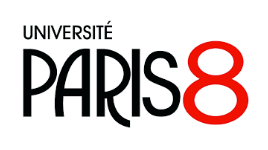entière
salle 124
« Workshop Basic Variety(ies) and initial stages in L2 : a natural and universal route? »
This workshop will take place in Paris 3-4 april 2025 (site de Pouchet).
CNRS, UAR Pouchet, 59, rue Pouchet, 75017 Paris, France, room 124
(Practical information: http://www.pouchet.cnrs.fr/acces/)
Organizing committee : Sandra Benazzo (Paris 8 & SFL), Cecilia Andorno (U. Torino), Marion Blondel (CNRS & SFL), Christine Dimroth (U. Münster), Annie-Claude Demagny (Paris 8 & SFL), Marzena Watorek (Paris 8 & SFL).
General description
About 30 years ago, the comparative study of the L2 acquisitional pathways observed in adult migrants in the frame of the ESF project (Perdue 1993) identified the initial stages in the appropriation of a new language in a natural environment. The similar development attested in the longitudinal data of learners representing ten different source / target language combinations was thus defined in terms of a succession of learning varieties (pre-basic, basic, post-basic), each of them characterised by a linguistic repertoire and specific combinatorial rules (nominal vs. verbal vs. finite utterance structure).
A crucial role in this perspective is played by the notion of "basic variety" (BV, Klein & Perdue 1997), a formally simple but communicatively effective linguistic system, largely independent of the specific features of the languages in contact, in which target-language-like lexical items are organised on the basis of semantic-pragmatic principles such as focus last/agent first.
It is the emergence of TL morphosyntactic categories that marks the transition to postbasic varieties: for the language combinations studied, this involves in particular the marking of 'finiteness', i.e. the development of functional oppositions through verbal morphology and the consequent restructuring of the utterance (Dietrich et al. 1995; Perdue et al. 2002 ; Dimroth & Starren 2003 ; Hendriks 2005 ; Klein & Dimroth 2009 ; Becker 2012 ; Klein 2012).
These acquisitional stages have been however identified for a certain profile of learners, namely adult migrants with a low level of schooling who were learning the target language in immersion.
Although this target group was chosen in order to gain an insight into 'natural' developmental tendencies, which would not be influenced by specific pedagogical approaches, the question of their validity in other learning situations remains open. Furthermore, the sample of target languages considered in the ESF project shows little typological variation: the majority are Germanic languages (English, German, Dutch and Swedish), with the addition of French, which is the most Germanic of the Romance languages (cf. van der Auwera & Patard 2015). The question arises as to whether the typological features of target languages have influenced the attested development and to what extent the latter reflects 'universal' trends in L2 acquisition.
The aim of this workshop is to discuss precisely whether and to what extent the central properties of development identified in the work mentioned above need to be adapted when considering different populations and learning situations. Continuing the reflection begun in Benazzo, Dimroth & Andorno (2023), it would be interesting to consider, for example, the impact of one of the following variables, although it is not always easy to isolate them:
- the learning environment: in particular, can we observe the emergence of a BV despite exposure to didactic input, which can make morphosyntactic structures more salient?
- the learner's background and (meta)linguistic knowledge: can varying levels of education, or even literacy (and the resulting unequal access to written input), influence the initial stages of acquisition?
- the age factor: can we observe the emergence of a BV in children who acquire an L2?
- the typological properties of the target language: what formal features would be typical of BV (and of the transition to post-basic varieties) in the acquisition of target languages that are typologically different?
- the proximity between source and target languages: would the acquisitional pathway be different when the two languages in contact are particularly close, both typologically and genetically (e.g. Spanish L1-Italian L2)?
In a transversal way, the question also arises as to whether an organisation such as that of BV is more a question of an acquisitional stage or rather of a mode of expression in specific conditions of communication.
References
Becker A. 2012. Finiteness and the acquisition of negation. In M. Watorek, S. Benazzo & M. Hickmann (éds.) Comparative Perspectives to Language Acquisition: A tribute to Clive Perdue (pp. 54-72). Clevedon: Multilingual Matters.
Benazzo, S., Dimroth, C. & Andorno, C. 2023. Back to the Basic Variety: does it emerge only with specific learner profiles, environments and languages? In C. Granget, I. Repiso & G. Fon Sing (éds.). Language, creoles, varieties. From emergence to transmission (pp. 29-70). Berlin: Language Science Press. [on line: https://langsci-press.org/catalog/book/409]
Dietrich, R., Klein, W. & Noyau, C. (1995). The acquisition of temporality in a second language. Amsterdam: John Benjamins
Dimroth, C. & Starren, M. (éds.) 2003. Information structure, linguistic structure and the dynamics of language acquisition. Amsterdam: John Benjamins
Hendriks H. (éd.) 2005. The structure of learner varieties. Amsterdam: John Benjamins
Klein, W. & Dimroth C. 2009. Untutored second language acquisition. In W. C. Ritchie, & T. K. Bhatia (Eds.), The new handbook of second language acquisition (pp. 503-522). Bingley: Emerald.
Klein, Wolfgang & Perdue, Clive. 1997. The Basic Variety or: Couldn’t natural languages be much simpler? Second Language Research, 13(4). 301–347.
Perdue, Clive (ed.). 1993. Adult language acquisition: Cross-linguistic perspectives. Vol.1 & 2. Cambridge: Cambridge University Press.
Perdue, C., Benazzo, S. & Giuliano, P. 2002. When finiteness gets marked: the relation between morphosyntactic development and use of scopal items in adult language acquisition. Linguistics 40 (4), 849-890.
van der Auwera, J. & Patard, A. 2015. Le français, la plus germanique des langues romanes ? In L. Brems, R. Möller & L. Rasier (éds.) Faits de langue(s). Pour Michel Kefer à l’occasion de son 65ème anniversaire (9-17). Berlin: Epubli.



